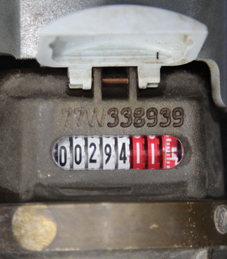Water FAQs
-
All water that passes through the water meter is the property owner’s responsibility.
Owners are encouraged to read their own meters regularly to monitor consumption and detect problems such as leaks.
- Water meters are generally inside the front property boundary. You are responsible for ensuring clear access to it.
- The white dials show kilolitres. (One kilolitre equals 1,000 litres.) The red dials show litres.
- Read all the numbers before a period when no water will be used (eg. when going out). Read again at least two hours later. If the numbers went up, there may be a possible leaking pipe, toilet or tap which will require further investigation.
-
Fees and charges apply to water services, including sewer blockages, water meter repairs, disconnection and reconnection of water.
View fees and charges here
-
It's a good idea to monitor your household's water meter to keep an eye on consumption and for the early detection of leaks.;
Here’s how to check for leaks:
- When you have finished using water for the night, make sure all taps are turned off (a dripping tap can lose up to 200 litres of water per day).
- Take a meter reading. Write down the number, both black and red. Make sure you tell other occupants of the property that you are testing for water leaks and ask them not to use any water throughout the night.
- Take another water meter reading first thing the next morning before any water is used. If the numbers have increased, you have a leak.
- Notify your plumber as soon as possible.
Depending on the volume of water lost, Wide Bay Water may make some adjustment to your water bill.
Please contact the billing staff on 1300 79 49 29 for more details.
-
-
Check if your water meter is turned on, and ask your neighbours if they have water flow.
If they are experiencing the same problem, this may indicate a burst water main.
Please call Wide Bay Water immediately on 1300 79 49 29.
-
If the leakage appears on the side of your water meter which is closest to your residence, you need to contact a plumber.
If not, please contact Wide Bay Water immediately on 1300 79 49 29.
-
Run your tap for a few minutes to test if the water becomes clean.
Call Wide Bay Water on 1300 79 49 29 if the issue continues.
-
Water can turn a brown or rust colour when there is a sudden increase in water pressure or a change in the flow direction which can stir up sediments in the pipes which have settled over time.
These sediments are particles of manganese and iron.
The water is still safe to drink.
-
Millions of tiny air bubbles cause water to appear white, cloudy or milky. This can occur when a faulty air valve allows air to enter the water pipe or when major work is being carried out on a water main.
This doesn’t change the water quality and it’s still safe to drink.
Water will become clear again when left to stand in a jug for a short period, allowing air to escape.
-
If this has occurred suddenly to all taps on your property, ask your neighbours if they are experiencing the same problem. If they are, call Wide Bay Water immediately on 1300 79 49 29 as it may indicate a break in a nearby water main.
If your neighbour’s property is unaffected, there may be a leak in the plumbing on your property. In this case, you will need to contact a plumber.
-
Biosolids are treated solids from the sewage treatment process, which are safe and full of nutrients originating from the food we eat.
Biosolids are used on local farms in accordance with requirements that have been developed by the Queensland Department of Environment and Science and other associated management requirements.
Council has reused biosolids as a resource in this way for more than 10 years and is fully committed to continuing to minimise disruption during this activityTo learn more about biosolids click the link below:

